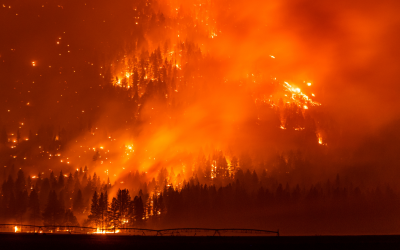Sustainable urban planning
Light Rail Transit networks and the Deep Lake water cooling project are just two examples of how Toronto is employing technological solutions to urban sustainability issues. David Miller, former Mayor of Toronto, spoke with Climate Action about the future of urban growth.

As Mayor of Toronto, David Miller introduced a C$3 million "clean and beautiful" city initiative to involve ordinary Torontonians in the clean-up of their city and allocated a further C$21 million over three years to pay for more clean-ups. Miller was also progressive in the new technologies he utilised across the city, including energy-efficient traffic signal lights and the Deep lake water cooling project, in which water from Lake Ontario was used to cool office buildings in downtown Toronto.
After two terms in office the highly popular mayor returned to the law profession, where he currently specialises in international business and sustainability. Miller also works at the Polytechnic Institute of New York University as Future of Cities Global Fellow, teaching courses on finding technological solutions to urban problems.
Climate Action interviewed David to find out more about developments in sustainable planning in the world's megacities and the technological solutions available.
You’ve made it your mission to promote environmental sustainability in urban settings. What sustains your own determination?
Well two things first of all being environmental is a part of who I am. I grew up in a small farming village in England. Everything was very sustainable and it wasn’t that people chose to do it; it was just what we did. You didn’t throw things away because people never had enough money, so you fixed them. Everybody had a compost heap and produced very little waste. All the farming was organic because that’s just the way it was. So it’s just part of who I am.
"I know that we can combine solving environmental challenges with creating jobs and a sustainable economy"
As a politician and now post-politics, I’m very passionate about this because the world’s obviously at a crisis point with respect to climate change. I believe there are solutions that already exist or that are close to existing, and my passion is to spread those solutions and the knowledge of those solutions so that we can do much much more. It’s sort of an optimistic quest because I know that we can combine solving environmental challenges with creating jobs and a sustainable economy.
We just have to decide to do it and that’s what drives me really – the hope that we can get people to change their behaviour individually and collectively, because the knowledge and the solutions are there. People think of me, and I am actually a big city man today, but they are my roots. It does stick with you. If you learn to live in environmental sustainable ways it does stay with you for the rest of your life.
Given that the political sphere has not made sufficient progress on climate change, will the business world be able to instigate radical gains in moving the world closer to a carbon neutral economy? Perhaps ‘green’ can be a shorthand term for both money and environmentally safe, they don’t have to be mutually exclusive?
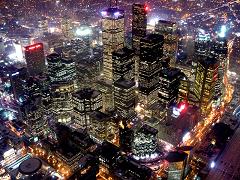
I’ll give you an example: in a Canadian context, ground source heat pumped geothermal energy works here, it’s economic today as a clean source of energy and a Canadian entrepreneur in a company I work with called Fenix Energy has figured out how to drill horizontally using techniques from the Canadian oil paths of horizontal drilling under existing buildings. So you can put ground source heat pumped geothermal under existing buildings, normally you can only do that under new buildings or if you had parkland areas nearby.
So it’s a way of retrofitting?
Well its retrofitting heating and cooling of buildings underneath them, not in the buildings themselves. By drilling horizontally – a normal geothermal would be vertical – and you do it on the lawn of the building let’s say. Well a downtown area that’s built up you can’t do that. This allows you, in major downtown areas, to do it. And this is all driven by the market, it’s driven by the innovative use of technology, seeing a market opportunity and realising that people want to turn to clean energy sources. You know tenants in buildings will pay a bit more if it’s clean energy.
So that’s one tiny example but there are a lot of places where today businesses can do very well, not necessarily because governments have forced them to, but because they’re thinking differently and starting from the premise of ‘how do we save the waste of resources here?’ and that saving of waste is good for the environment of course, and good for business.
The media tycoon Sir Richard Branson recently stated that reducing our carbon output and capturing carbon emissions is one of the greatest wealth generating opportunities of our generation.In the past, being environmentally responsible in business was always perceived as a cost, rather than an opportunity to actually increase profits. Why is this now changing?
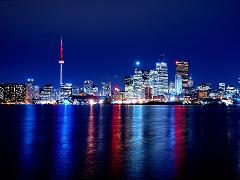
Businesses want it to be green as they find it difficult to get new employees unless they meet younger people’s moral and ethical standards, and one of those is contributing to a healthy environment. And with respect to apartment owners, it’s often less expensive to run a low energy building, but more expensive to build it. And you have benefits in both cases of things like cleaner air in buildings, which will have a productivity benefit for businesses.
So I think it’s driven by people changing their minds and saying “I want to live by my values” and not just by the charities I contribute to or the people I vote for, but in my business life too. That’s producing a lot of thinking amongst businesses about how do we do this.
How has Toronto fostered this real sense of environmental responsibility amongst its citizens?
We showed leadership, that mattered. We have an aggressive climate change strategy that passed city council unanimously. One of the measures we took in our environmental strategy was a green building bylaw for example, but we also fostered the community. So we hired people called community animators that go out and work in neighbourhood with people on green projects, and there are often incentives from government and it allowed people to not only to access the incentives but also to work together as a neighbourhood.
"The business world has become more conscious too and that helped us"
It might be a small community farm or allotment gardens, so that was important and I think that the business world has become more conscious too and that helped us. Small businesses in Toronto are often organised into to something called a Business Improvement Area – they call them BIDs in the US, meaning Business Improvement District, like a high street in British terms.
The association of all those BIAs got together and said ‘we want to green businesses because our customers are asking questions’ and they created an organisation called Canada Green TO, short for Toronto – and the association of all those businesses go together and said we want to improve because our customers want us to improve. So it came from those three things: enlightened self-interest of businesses, some leadership shown by the city and from systematically engaging citizens from where they live in their neighbourhoods.
As an international businesses advisor, how do you go about imparting those core messages when you are doing your consulting work to businesses that want to get green?
I find businesses want to do the right thing and they want to do it for a variety of reasons. They of course want to cut waste to run more efficiently. They also want to be able to recruit employees and they want to be able to navigate any complicated policy world and have some idea where people are going.
So I think many businesses outside the oil and coal industry are looking for these opportunities. So I try to assist them in understanding how cities think and where the opportunities are within cities. They will be seeking input from a different angle, where do we fit in? Where is the public policy going? What’s the market opportunity for us? There’s a lot of resonance, people get it, they know it’s about saving costs and they’re very interested in looking at the perspective of where cities and mayors are trying to go.
You recently championed Light Rail Transit as the solution to modern mass transit issues. What sets this system apart and why is this the key to smart and sustainable transit expansion?
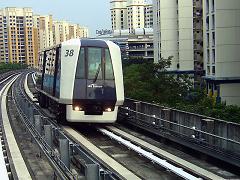
In most North American cities, they have been built for the car, not for people. The densities are not enough to justify the cost of subways, particularly because operating subways becomes very cost prohibitive. In Toronto’s case we’re building a network of LRTs because we could reach medium density neighbourhoods and we could build an entire network for the cost of building one subway. And it’s important firstly to have the technology that works for the areas you’re going to, and secondly to be able to have a network. London for example has a brilliant network – the subway and bus network; Toronto has a couple of lines.
You need a strong network. In North American culture people tend to drive everywhere because they can’t get home – they don’t know for sure that they’ll end up near a subway. So for those three reasons: they’re electric so they’re clean and in time much more powered by renewable sources, secondly, they are affordable and thirdly, they meet the transportation needs of the city.
In the TEDx lecture you gave, you emphasise the importance of language, rejecting exclusionary blanket terms such as ‘taxpayer’ and reclaiming the what we really are, neighbours, friends, residents and citizens. In a practical hands on way, how do people actually effect change and claim back such language?
Well it's interesting and I'm glad you asked me that. I’ve been to a number of public meetings as an elected official, where people have stood up to comment and prefaced it by saying “I’m not a taxpayer”, by which they mean they’re low income. But of course they are a taxpayer, if they bought anything it’s taxed and if you rent you pay tax. So it’s very exclusionary language and I think people have to take back the language.
"Government...needs to be inclusive and to make sure people’s voices are heard"
And I think we’re neighbours, we’re friends, we’re residents, we’re citizens. We won’t take the language back unless people start speaking up collectively, through things like… well, over here the newspaper always uses the word taxpayer when it means citizen. And I think people should start writing letters to editors, and people should start saying it to each other, politicians should be very vigilant of their language. This exclusionary language seeped in over the past 25 to 30 years and we need to speak up. And we also need actions.
The idea of citizenship means people have rights to participate, taking some actions and also duties, like jury duty. But a government undertaking actions needs to be inclusive and to make sure people’s voices are heard. It’s about speaking up and being consistent with those values and the way you act.
So it’s about fomenting a groundswell of talk with friends and taking language back at a grass roots level, objecting to negative language use?
I think grassroots movements are the way to change these kinds of discussions, but it needs leadership as well. It really helps if leading politicians or figures in the non-profit and business world are making the same point. I’ve seen that work in a different context in Canada. One of the neighbourhoods in Toronto really objected to the fact that, if there was a crime, people would say well, this occurred in Scarborough, but if something good happened, they would name the streets.
So people created a movement with support that said - talk about the East end of Toronto, not our neighbourhood. And now on the news, that’s what you hear, they talk about the street address or the East end, but they don’t stereotype the whole neighbourhood as having problems, so I know it can work. This a multinational issue, but I think politicians around the world should be very vigilant about using the words ‘resident’ and ‘citizen’ instead of tax payer, and you can start that movement very quickly.
Cities generate 80 per cent of the world’s energy consumption and carbon emissions despite accounting for only 2 per cent of the Earth’s surface – can town planning, the building & construction industry, and sustainable policies in governance, align together to create a sustainable future - is this realistic?
I think it’s very realistic. Cities are where the bulk of greenhouse gas emission are, they’re where the bulk of the people are. We passed a moment in 2008 where, for all time until that moment, more people lived outside cities than in them. Now, and for the rest of time, more people will live inside cities. It is unbelievable, it is an Earth changing moment and it’s where most of the economy is. So that tells me, if you help create solutions that are economic and environmental that are going to be sustainable, then they’ll be by necessity in cities because that’s where the problems are, and where the opportunities are, and where the people are. And I think the good news is that lots of these innovations are underway, we need to do more, we need to help people to scale up to be world wide but that’s why it’s so important to focus on cities.
And there are a lot of principles there, cities themselves need to be built in a sustainable way. You need to think about it from a land use perspective, from a planning perspective. When I was mayor we flipped the equation around and welcomed growth into the city. By building a transit in the city we are able to welcome development into places that we think there are good opportunities for developers. You have to be built in a sustainable way, and that includes your new buildings being sustainable, your old buildings having retrofits, and then it will start to get into a virtuous circle and you will create economic opportunity from these issues as well. You become sustainable from a different perspective, so you get a triple bottom line approach that includes social justice and equity, if you put those principles at the heart of your strategy.
What steps should a procurement department - eager to implement sustainable solutions in an urban project - take in order to make progressive, beneficial decisions that won’t backfire in economic terms?
Procurement departments are set up for the lowest cost solution, and in thinking environmentally you have to think of it differently, it’s not the lowest cost purchase, it’s often the lowest operating cost that you should be looking for. Often you can buy something inexpensive that’s very wasteful. It’s a slight thinking difference on the accounting side.
"With low operating cost that’s usually when you’ve got something very efficient which is usually more environmentally friendly"
As a minimum you need to look at lifecycle costs, because with low operating cost that’s usually when you’ve got something very efficient which is usually more environmentally friendly so that’s a part of it. Another part is to learn from each other and that’s something the C40 can do. Cities can say, “here’s how we solve that problem”, here are technologies we have that have worked previously.
And the third thing cities can do before it gets to the purchasing department is to run pilot projects and tests to make sure the promised benefits from a new technology are real, and Toronto’s been a pretty good example of that – so we piloted LED street lights for example. In between, LA liked the idea so much that LA just went ahead and did it. So from a bureaucratic perspective you need the purchasing department to be there with your environment department having discussions about this so they can understand each other.
With parliaments changing every 4 years and the sustainability of a city being an ongoing investment, how do you ensure that long-term developments are not sacrificed for short-term gains?
That’s a tricky issue and I think that part of that is the accounting point I made about lifecycle costs, and in the bigger picture ultimately you need the political will for this, so you do need, if you’re a leader like I was trying to bring in a progressive agenda, you have to push the civil service together in new ways to make sure that agenda happens – and will continue to happen when you choose not run again, otherwise things will just revert to normal.
What innovations need to come to market and do you know of any products or technologies that are really making a difference?
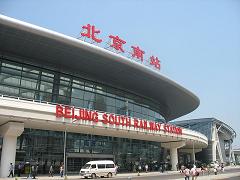
If you have a condominium building, in the morning between 6.30 and 8am people are taking hot water for showers or baths and that all goes down the drain, and this machine takes the heat out and they can use it to heat a building all day. And if there’s a commercial building next door and you have a geothermal loop between them, you can literally heat the commercial building next door with the wastewater heat from the condominium, with the water sewage from the morning.
That’s a game changing technology. That technology today heats and cools the Beijing South railway station, which is huge. So we know it works and that’s just one technology. In most cities, the biggest energy consumer and the biggest greenhouse gas emitter, is the heating and cooling of buildings. So if we could take those off either natural gas or electricity - which is how they’re heated in Canada - and put them on a clean source, you’ll get massive savings. You’ll have economic savings as the building becomes more efficient, and huge reductions in carbon emissions, so it’s a really interesting technology.
Another one I saw which is a bit more of an experimental level, is from a guy who has a technology that they’ve used in the US military to get rid of nerve gas through a hydrogen process. They can create inert materials and fuel in this process where you put in things like garbage and sewage – and it’s not burning, it’s a chemical process. There are no toxic emissions and they’re trying to scale it up right now. It’s in a couple of big drums and it’s a chemical reaction of the materials by the introduction of hydrogen at quite high temperatures – it’s a chemical reaction as opposed to burning and in North America incinerating is controversial because of the emissions. They’re at the pilot stage and they’re trying to scale it up but they’re quite confident, because of the work they’ve done with the US military, that it will succeed.
By 2025, according to the Far Eastern Economic Review, Asia alone will have at least 10 megacities, including Mumbai, (33 million), Shanghai, (27 million), Karachi, (26.5 million), Dhaka, (26 million) and Jakarta (24.9 million people). What, if anything, is being done to foment sustainability in these regions?
The good news is that the government of China takes this very seriously and that the themes of the problems are the same – so, broad brush, we know how to create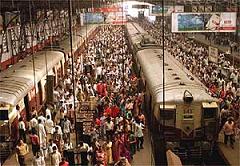
We now know that’s an unsustainable lifestyle and that we shouldn’t have built the cities in those ways. There’s a real challenge, we know what the solutions are, and we know we need a city built around public transit and walking and biking, with the car having its place but not running the city. And we’re starting to see really good technologies on waste, heating and on cooling and energy generation. We see all that coming but really we need to capture the hearts and minds of people. It’s not the technologies and practicalities – ten years from now we’ll be able to say here’s the sweetest solutions – we can do them now, you can see what they are, but I think it’s that aspirational issue.
Given that projections indicate that the majority of future urban growth will be in developing countries, where the populations suffer malnutrition and lack of basic healthcare, is it realistic to expect sustainable concerns to be front of mind in this context?
It means you have to fight to make sure they are front of mind, obviously basic nutrition has to take priority. But these cities are literally growing as we speak and the buildings we build now are probably going to be here in eighty years, so I think from the perspective of the national governments and mayors, this should be top of mind.
"If the World Bank invests in infrastructure, it should be investing in resilient sustainable infrastructure"
And from the perspective of international institutions they should be top of mind. So if the World Bank invests in infrastructure, it should be investing in resilient sustainable infrastructure. The good news is that institutions like the World Bank the United Nations Environment Programme, the United Nations itself, the OECD, these International institutions are taking these issues seriously and that will help certainly in the political realm.
You can see in China they are building all sustainable cities out of nothing. It's more of a challenge in cities where they are seeing a huge population influx, where people are just trying to get some basic standards of living, but it's not an insurmountable one. And the thing is, if you do this right it's about good urban planning. Cities know that they need good urban planning just to survive let alone prosper so I think you can marry that with sustainability in a very positive and important way.



